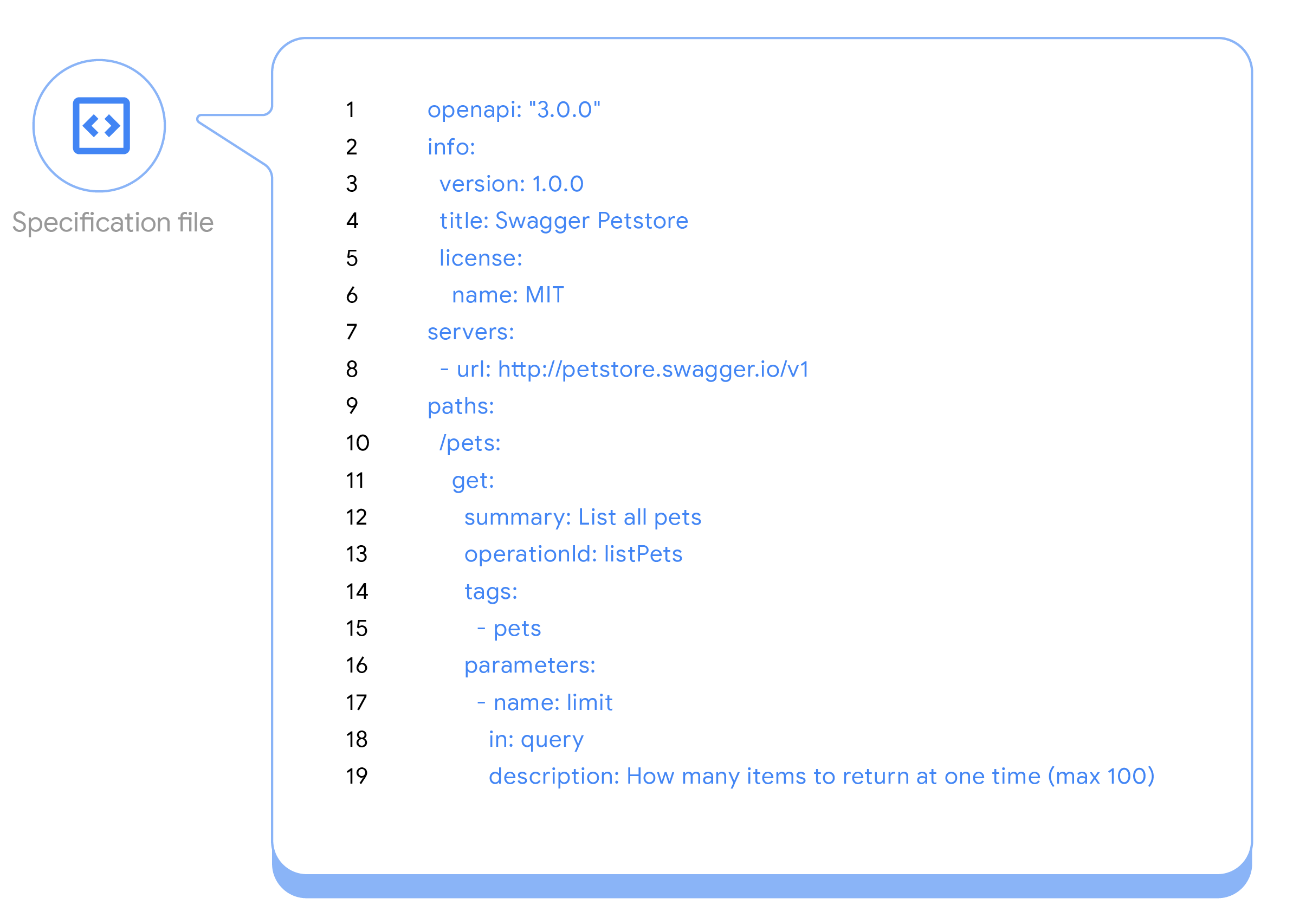Diese Seite gilt für Apigee und Apigee Hybrid.
Informationen zu API-Spezifikationen
API-Spezifikationen verwenden Standardformate zum Beschreiben von APIs. Sie sind maschinenlesbar, aber auch leicht für Menschen lesbar und verständlich. Spezifikationen beschreiben in der Regel Elemente einer API, darunter Basispfad, Pfade und Verben, Header, Abfrageparameter, Vorgänge, Inhaltstypen, Antwortbeschreibungen usw., wie in Abbildung 1 dargestellt.

Abbildung 1. Auszug aus einer OpenAPI-Spezifikation.
Eine API-Version kann mehrere API-Spezifikationen desselben oder unterschiedlichen Typs enthalten, z. B. OpenAPI-Spezifikation, Proto und WSDL. Falls unterstützt, kann der API-Hub eine API-Spezifikation parsen, um API-Metadaten wie die API-ID, Versions-ID, Beschreibung und Vorgänge zu extrahieren und zu speichern. Siehe Spezifikationsparsen.
API-Spezifikationen mit API-Hub verwenden
Sie können eine API-Version im API-Hub mit oder ohne API-Spezifikation erstellen.
Sie können eine Spezifikation beim Erstellen einer Version hochladen. Wenn Sie sich die Details einer API auf der Benutzeroberfläche ansehen, sehen Sie eine Liste aller Spezifikationen, die mit den Versionen einer API-Ressource verknüpft sind.
Sie können über die REST API auch eine Version mit einer Spezifikation erstellen und konfigurieren. Wenn Sie die API verwenden, erstellen Sie eine API-Versionsentität mit der Spezifikation und können dann die Version an eine API-Ressource anhängen.
Weitere Informationen finden Sie unter Spezifikation zu einer Version hinzufügen.
Parsen von Spezifikationen
Falls unterstützt, kann der API-Hub eine API-Spezifikation parsen, um Informationen zur API zu extrahieren und mit einer API-Version zu speichern. Beispielsweise kann der API-Hub eine API-OpenAPI-Spezifikation parsen, um die API-ID, die Versions-ID, die Beschreibung, Vorgänge und andere Metadaten zu extrahieren und zu speichern.
Der API-Hub unterstützt auch die Spezifikationsvalidierung. Siehe API-Spezifikation validieren.
